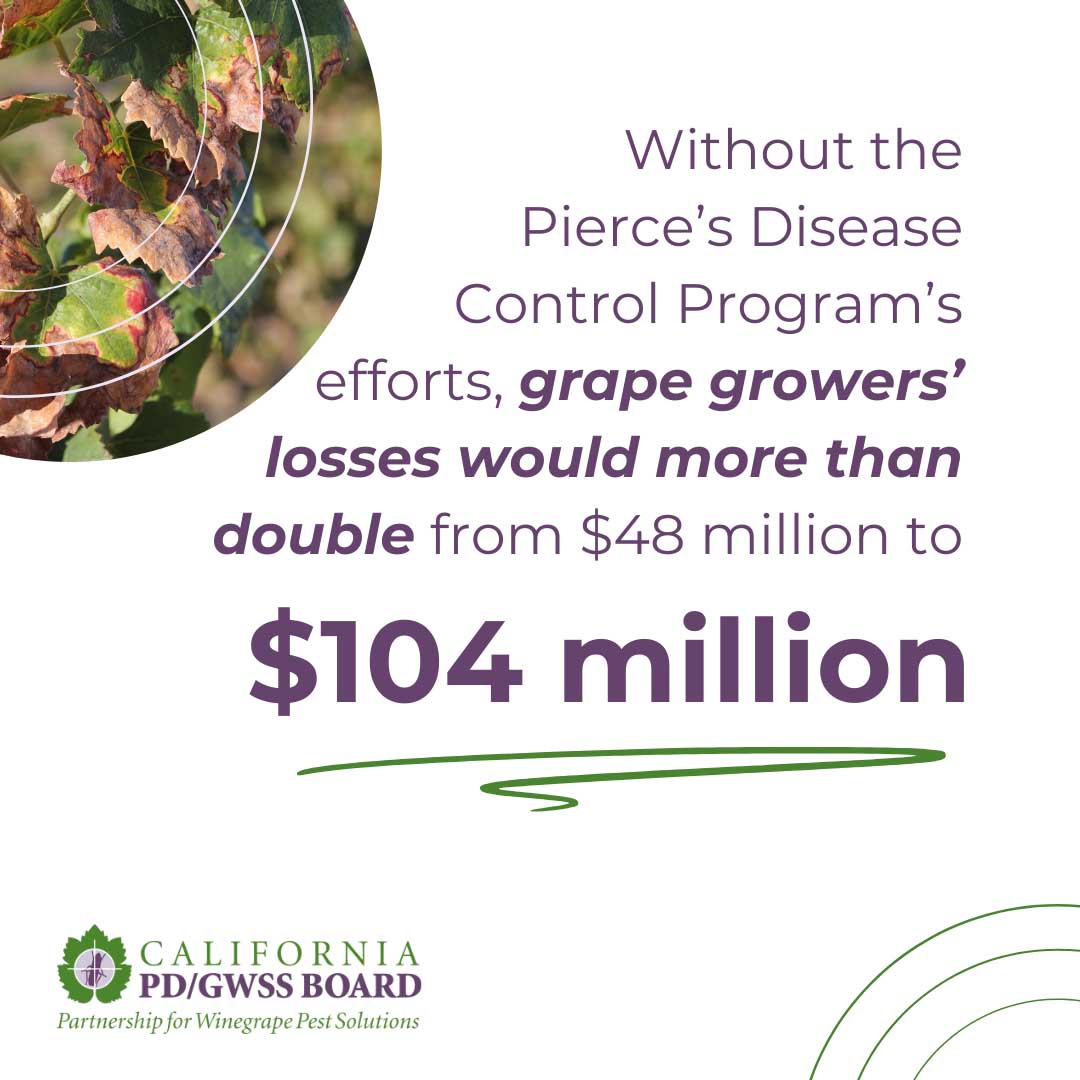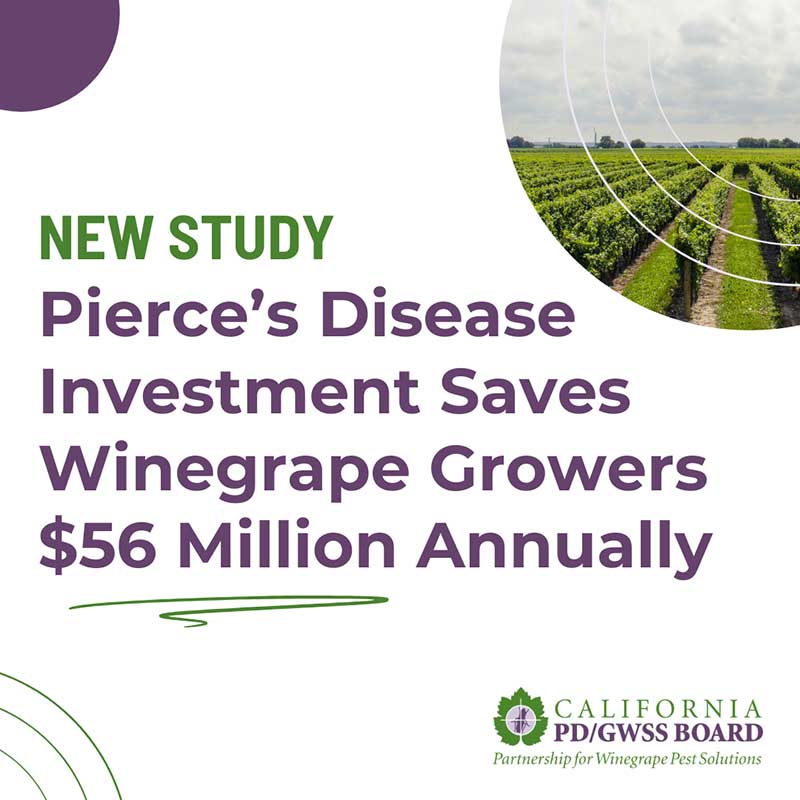Pierce’s Disease Economic Impact Study
Pierce’s Disease Investment Saves Winegrape Growers $56 Million Annually

According to a new economic impact study, the California Department of Food and Agriculture’s Pierce’s disease (PD) and glassy-winged sharpshooter (GWSS) prevention, control and research efforts save California winegrape growers $56 million annually by reducing losses from the fatal grapevine disease. Without the program’s efforts, growers’ losses would more than double from $48 million to $104 million. The study found that if GWSS spread unchecked, outbreaks of PD could cost winegrape growers an additional $56 million a year in lost production and vine replacement.
The Costs of Pierce’s Disease in the California Grape and Wine Industry

“This study highlights the serious threat Pierce’s disease and the glassy-winged sharpshooter pose to our industry and reinforces the importance of grower-funded research,” said Randy Heinzen, a Paso Robles winegrape grower on the Pierce’s Disease and Glassy-Winged Sharpshooter Board. “The public-private partnership led by the Pierce’s Disease Control Program is vital, allowing grower assessment funds to drive research that improves pest and disease management and to develop practical, sustainable solutions for the long-term viability of our industry.”
The unique funding partnership the winegrape industry forged between growers, the state and federal government and industry fuels the essential research and control operations that have significantly blunted the most severe impacts of PD and GWSS. Even with these efforts, PD still costs an estimated $110 million annually in California, including $45 million for control, prevention and research, $48 million in lost winegrape production and vine replacement and $17 million in lost table and raisin grape production and vine replacement. Without these critical programs, the industry's losses in production and vine replacement would be even higher, putting greater financial strain on growers and threatening the long-term stability of California’s vineyards.
With industry and government support keeping PD and GWSS in check, grower-funded research continues to drive advancements in pest and disease management while supporting field trials for promising solutions. According to the study’s authors, the economic burden of PD and GWSS could decrease as this research yields practical, vineyard-ready innovations.
